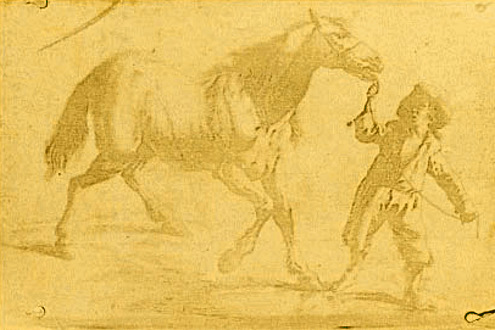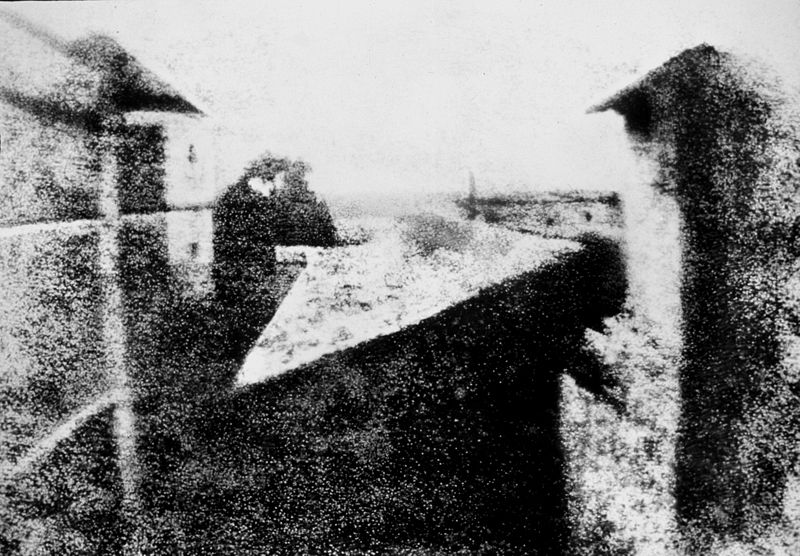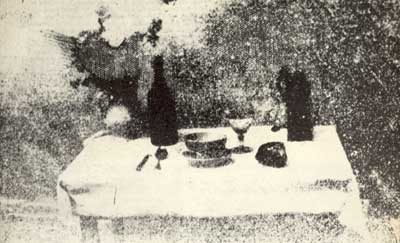<Back to Index>
- Inventor Joseph Nicéphore Niépce, 1765
- Novelist Alessandro Francesco Tommaso Manzoni, 1785
- 1st President of Czechoslovakia Tomáš Garrigue Masaryk, 1850
PAGE SPONSOR
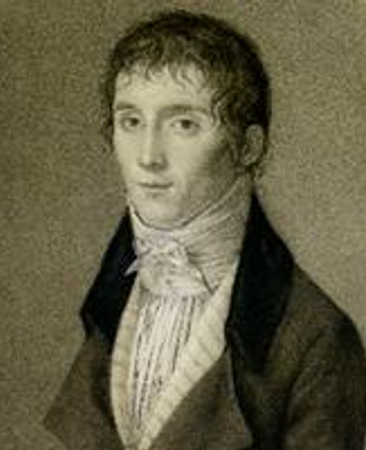
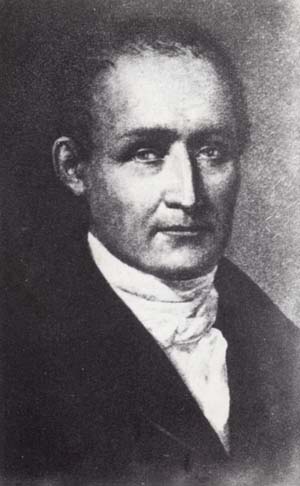
Joseph Nicéphore Niépce (March 7, 1765 – July 5, 1833) was a French inventor, most noted as one of the inventors of photography and a pioneer in the field. He is most notable for producing the first photographs, dating to the 1820s. As revolutionary as his invention was, Niépce is little known even today.
Joseph Niépce was born on 7 March 1765 in Chalon-sur-Saône, Saône-et-Loire. He took what is believed to be the world’s first photogravure etching, in 1822, of an engraving of Pope Pius VII, but the original was later destroyed when he attempted to duplicate it. The earliest surviving photogravure etching by Niépce is of a 17th century engraving of a man with a horse and of an engraving of a woman with a spinning wheel. Niépce did not have a steady enough hand to trace the inverted images created by the camera obscura, as was popular in his day, so he looked for a way to capture an image permanently. He experimented with lithography, which led him in his attempt to take a photograph using a camera obscura. Niépce also experimented with silver chloride, which darkens when exposed to light, but eventually looked to bitumen, which he used in his first successful attempt at capturing nature photographically. He dissolved bitumen in lavender oil, a solvent often used in varnishes, and coated the sheet of pewter with this light capturing mixture. He placed the sheet inside a camera obscura to capture the picture, and eight hours later removed it and washed it with lavender oil to remove the unexposed bitumen.
He began experimenting to set optical images in 1793. Some of his early experiments made images, but they faded very fast. The earliest known, surviving example of a Niépce photograph (or any other photograph) was created in 1825. Niépce called his process heliography, which literally means "sun writing". Nevertheless, semiologist Roland Barthes, in a Spanish edition of his book "La chambre claire", "La cámara lúcida" (Paidós, Barcelona,1989) shows a picture from 1822, "Table ready", a foggy photo of a table set to be used for a meal.
Starting in 1829 he began collaborating on improved photographic processes with Louis Daguerre, and together they developed the physautotype,
a process that used lavender oil. The partnership lasted until
Niépce’s death in 1833. Daguerre continued with experimentation,
eventually developing a process that little resembled that of
Niépce. He named this the "Daguerreotype",
after himself. He managed in 1839 to get the government of France to
purchase his invention on behalf of the people of France. The French
government agreed to award Daguerre a yearly stipend of 6,000 Francs
for the rest of his life, and to give the estate of Niépce 4,000
Francs yearly. This arrangement rankled with Niépce's son, who
claimed Daguerre was reaping all the benefits of his father's work. In
some ways, he was right — for a good many years, Joseph
Nicéphore
Niépce received little credit for his significant contribution
to the development of photography.
Later historians have reclaimed Niépce from relative obscurity,
and it is now generally recognized that his "heliographic" process was
the first successful example of what we now call photography: an image created on a light-sensitive surface, by the action of light. None of Niépce's inventions have been officially acknowledged; those accredited to him are: The lunar crater Niepce is named after him. As of 2008 Niépce's photograph, View from the Window at Le Gras, is on display in the Harry Ransom Humanities Research Center at the University of Texas at Austin. The image was rediscovered in 1952 by historians Alison and Helmut Gernsheim.
